![]()
Sun, Sept 11, 2011 | Islamist Watch | Pajamas Media | by Patrick Poole
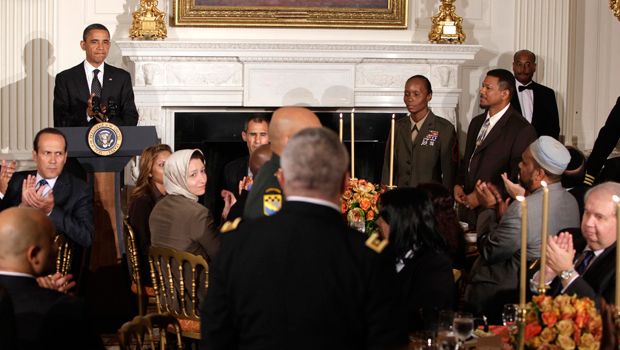
Mohamed Magid (wearing a prayer cap), head of the Muslim Brotherhood-linked Islamic Society of North America, sitting at the front table only a few feet from the president. The prayer cap (taqiyah or kufi) is a short, rounded cap worn by Muslim men to identify oneself to the rest of the world as somebody who adheres to Islam and to emulate Muhammad. A hadith in the books of Abu Dawud and Tirmidhi quotes Prophet Muhammad as saying, "The distinction between us and the polytheists is the turbans over our caps." (Photo: Reuters)
The U.S. Government’s Failed History of Muslim Outreach
When President Obama hosted his annual iftar dinner in August to commemorate Ramadan, the list of invitees published by the White House was curiously missing the names of several attendees — all of whom are top leaders of organizations known to be purveyors of jihadist ideology. But it was not like they had crashed the party. One of the unlisted, Mohamed Magid, head of the Muslim Brotherhood-linked Islamic Society of North America, was photographed by Reuters sitting at the front table only a few feet from the president as he spoke.
This was just the most recent episode in the federal government’s disastrous attempts at outreach to the Muslim community since the 9/11 attacks. With the release of President Obama’s new strategic plan to combat “violent extremism” by expanding outreach to these same terror-tied groups, the present administration seems intent on compounding the problems wrought by its predecessors.
Misguided outreach activities began long before 9/11, with the best example being the case of Abdurahman Alamoudi.
Alamoudi was the conduit through which much of the U.S. government’s outreach was pursued following the 1993 World Trade Center bombing. Not only was he asked by the Clinton administration to help train and certify all Muslim military chaplains, his organization being the first to do so, but he also was appointed by the State Department in 1997 as a goodwill ambassador to the Middle East, making six taxpayer-funded trips. It is fair to say that during this period, Alamoudi was the most prominent and politically connected Muslim leader in America.
As we now know, Alamoudi was indicted in October 2003 for moving money on behalf of Libyan intelligence in an assassination plot targeting Saudi Prince (now King) Abdullah. The U.S. government has admitted that at the time he was being courted by Democrats and Republicans alike, he was a major fundraiser for al-Qaeda.
However, it is not as if the U.S. government was unaware of Alamoudi’s attachments. As far back as 1993, an informant told the FBI that Alamoudi was funneling regular payments from Osama bin Laden to Omar Abdel Rahman, the “blind sheikh” who was convicted of authorizing terror attacks against New York landmarks. In March 1996, Alamoudi’s association with Hamas leader Mousa Abu Marzook was exposed in the pages of the Wall Street Journal. Two years later, the State Department came under fire by the New York Post for inviting Alamoudi to official events despite his known remarks in support of terrorism and terrorist leaders.
When President Bush took office, Alamoudi was quickly courted by the new administration. In June 2001, the Jerusalem Post reported that Alamoudi was going to be part of a White House meeting with Vice President Cheney despite the fact that Alamoudi was known to have attended a terror confab in Beirut earlier that year featuring representatives from virtually every major Islamic terrorist organization in the world, including al-Qaeda.
Yet just days after the 9/11 attacks, Alamoudi was one of the Muslim leaders asked to appear with President Bush at the Islamic Center of Washington, D.C. That same week, one of Alamoudi’s close associates, Muzammil Siddiqi, was asked to deliver an Islamic prayer and to represent the entire Muslim-American community at the national prayer service mourning the fallen.
The inclusion of Alamoudi and Siddiqi at the post-9/11 events was highly criticized, especially because Alamoudi had been videotaped in October 2000, as noted by the Los Angeles Times, expressing his support for Hamas and Hezbollah at a rally held just steps from the White House. At that same demonstration, Siddiqi accused the U.S. of responsibility for the plight of the Palestinians and warned that “the wrath of God will come.” One former Secret Service agent told Fox News that “the intelligence community has known for some time the association of Dr. Muzammil Siddiqi and Mr. Alamoudi and their association with terrorist organizations.”
The decision to continue doing business with Alamoudi and others like him was just one of many blunders made by the U.S. government in its eagerness to conduct Muslim outreach in the wake of 9/11.
Most embarrassing of all, one of the first Muslim leaders to whom the government turned after the attacks was none other than Anwar al-Awlaki, the al-Qaeda cleric who was in direct contact with at least three of the 9/11 hijackers and is currently on the CIA’s kill-or-capture list.
As the cleanup from the terrorist attack on the Pentagon continued, Awlaki was invited by the Pentagon’s Office of Government Counsel to speak at a lunch in the building’s executive offices as part of the government’s new Muslim outreach efforts. But a joint congressional inquiry into 9/11 found that law enforcement had been investigating Awlaki’s contacts with terrorism suspects as far back as 1999. Also, before his appearance at the Pentagon, the New York Times had noted Awlaki’s anti-American rhetoric prior to the attacks.
This dubious approach to outreach continued through the end of Bush’s second term, as seen in the egregious invitation by the National Counterterrorism Center (NCTC) to Yasir Qadhi to speak on de-radicalization at a conference in August 2008. At that time too, Qadhi’s extremist views, such as his statements denouncing “the hoax of the Holocaust,” were well known. Furthermore, at a 2006 Muslim outreach event in Houston, Homeland Security official Daniel Sutherland was present, as reported by the Houston Chronicle, when Qadhi openly admitted that he was on the terror watch list.
No one at the NCTC bothered to question Qadhi’s “de-radicalization” credentials. By the time he was invited to speak at the NCTC conference, at least one of Qadhi’s Houston students, Daniel Maldonado, had been captured by Kenyan forces fighting with the Somali al-Shabaab terrorist group. A number of other students from Qadhi’s AlMaghrib Institute program have gone on to careers in terrorism, including Christmas Day underwear bomber Umar Farouk AbdulMutallab, who attended a two-week AlMaghrib training session in Houston and two other events in the UK.
If Yasir Qadhi is an expert in de-radicalization, one shudders to think what an expert in radicalization might produce.
Outreach under President Obama has not fared any better, beginning with his inclusion of Ingrid Mattson, then head of the terror-tied Islamic Society of North America, in his inaugural prayer service.
The NCTC under this administration continues the bipartisan policy of Muslim outreach disasters, best exemplified when it gave Sheikh Kifah Mustapha a tour of its top-secret facility as part of the FBI’s Citizens’ Academy civilian training program in September 2010. Why was this so catastrophic? In 2007 Mustapha was named an unindicted co-conspirator in the largest terrorism financing trial in American history. During that trial, FBI agent Lara Burns testified that Mustapha was in a singing troupe that glorified Hamas and encouraged the killing of Jews as part of fundraising efforts for Hamas.
Last year Mustapha was removed as an Illinois State Police chaplain in the wake of media reports noting his longtime terrorist support activities. After Mustapha sued for discrimination, a protective order was filed stating that the Chicago FBI’s special agent in charge had warned police officials that Mustapha would never be able to pass an FBI background check. One former FBI official told the Washington Times that Mustapha was “a known senior Hamas guy.” When questioned about his inclusion in the program, FBI Director Robert Mueller refused to address the mountain of evidence that federal prosecutors and the FBI had compiled, saying “I am not going to talk about any particular individual.”
No matter how embarrassing the Mustapha incident was for the NCTC and FBI, the Department of Homeland Security has no grounds to fault other agencies, especially after Secretary Napolitano appointed Mohamed Elibiary to her Homeland Security Advisory Council last October. Elibiary had previously served on the DHS Countering Violent Extremism Working Group, despite his speaking at a December 2004 conference honoring Ayatollah Khomeini, an event that the Dallas Morning News called a “disgrace.”
Recently Elibiary has billed himself as a “de-radicalization expert,” notwithstanding clear evidence of his previous defense of terrorist support organizations, praise for jihadist authors, and threats made against a Dallas journalist who exposed his extremist views. His open support for jihadist ideological godfather Sayyid Qutb prompted the Washington Times to comment that “he has no business being anywhere in government, let alone as an adviser at the uppermost reaches of an agency that purports to protect the homeland.”
Considering Elibiary’s track record, it seems that he has done more to promote violent extremism than to prevent it.
The State Department has not been immune to such outreach disasters either. Last December the American ambassador to the UK, Louis B. Susman, stirred international outrage by visiting the notorious East London Mosque, well known as a longtime hotbed of radicalism and a prolific terrorist incubator. In January 2009, the mosque hosted a conference featuring Anwar al-Awlaki via telephone. Just a few weeks before Susman’s visit, the mosque chairman defended Awlaki’s participation in the conference, calling it an act of “fairness and justice.”
The visit by the ambassador was slammed in the Wall Street Journal by Shiraz Maher of the International Centre for the Study of Radicalisation. Maher concluded that “Mr. Susman’s visit illustrates the blunders Western politicians often make by reaching out to the wrong Muslim ‘dialogue partners,'” and that the appearance of such a high-ranking diplomat at the mosque had “emboldened robed reactionaries at the expense of their more moderate counterparts.”
Maher added that Susman’s visit was such an egregious mistake that British Prime Minister David Cameron instructed officials to conduct an “exhaustive review” of the government’s Preventing Violent Extremism program to ensure that all community partners had been thoroughly vetted. However, the U.S. government failed even to acknowledge the blunder, let alone reconsider its policy of engaging extremists.
Thus is the state of the U.S. government’s Muslim outreach ten years after the 9/11 attacks. Rather than learning from gross errors committed by the Clinton and Bush administrations, the Obama administration’s ongoing record and the release of its strategic plan to combat “violent extremism” make it appear that it seeks to enshrine this epic catalog of failure as a matter of permanent policy.
Time and again, the U.S. government has engaged the wrong Muslim partners, legitimizing and empowering the very extremists whose influence should be limited. This has been done despite repeated warnings from counterterrorism and law enforcement officials at virtually every step of the way. As these episodes indicate, damaging information about the government’s outreach partners has been known and intentionally ignored, resulting in a lengthy list of bipartisan fiascos.
If the death of nearly 3,000 of our fellow citizens on 9/11 was insufficient to reconsider how our government conducts Muslim outreach, it is too terrible to contemplate how many more lives may eventually be sacrificed before our elected officials decide to reverse course.
Patrick Poole is an anti-terrorism consultant to law enforcement and the military. This article was sponsored by Islamist Watch, a project of the Middle East Forum.



 RSS
RSS

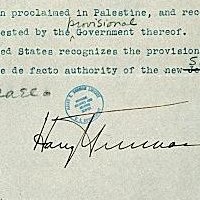
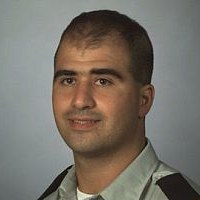
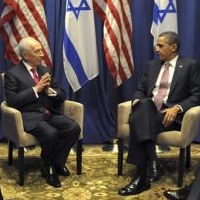
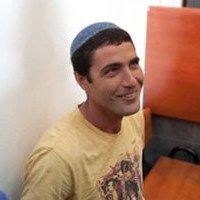





The U.S. Government’s Failed History of Muslim Outreach | Middle East News, Articles, Background, Op http://t.co/GVr0yGX
[…] is the original post: The U.S. Government's Failed History of Muslim Outreach | Middle … This entry was posted in American constitution, Economy and tagged covering, economy, energy, […]
The U.S. Government’s Failed History of Muslim Outreach | Middle East News, Articles, Background, Op http://t.co/GVr0yGX